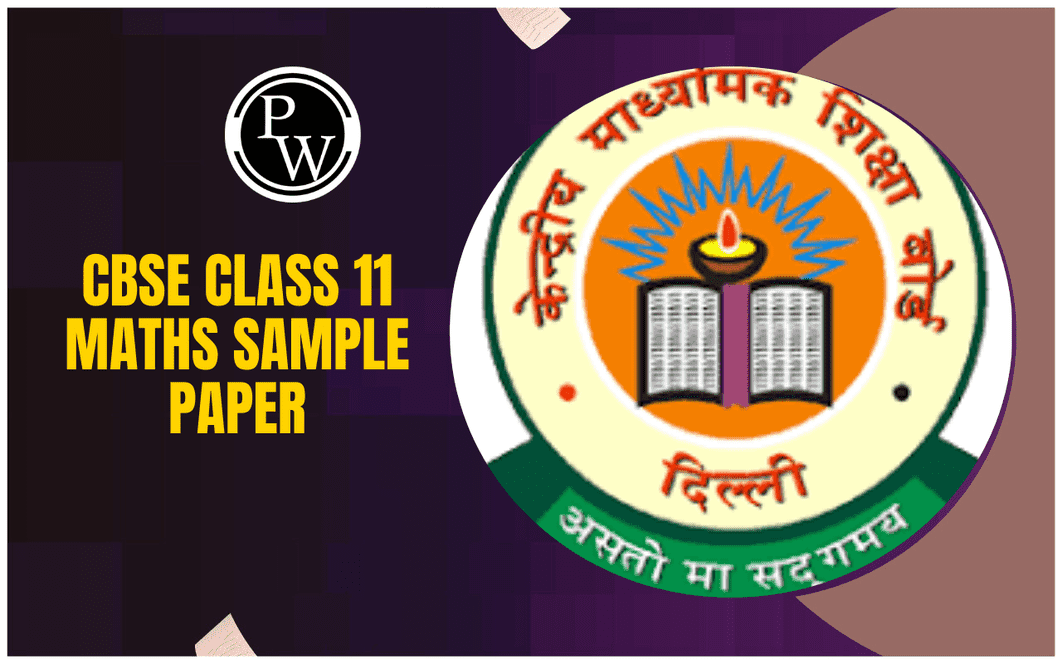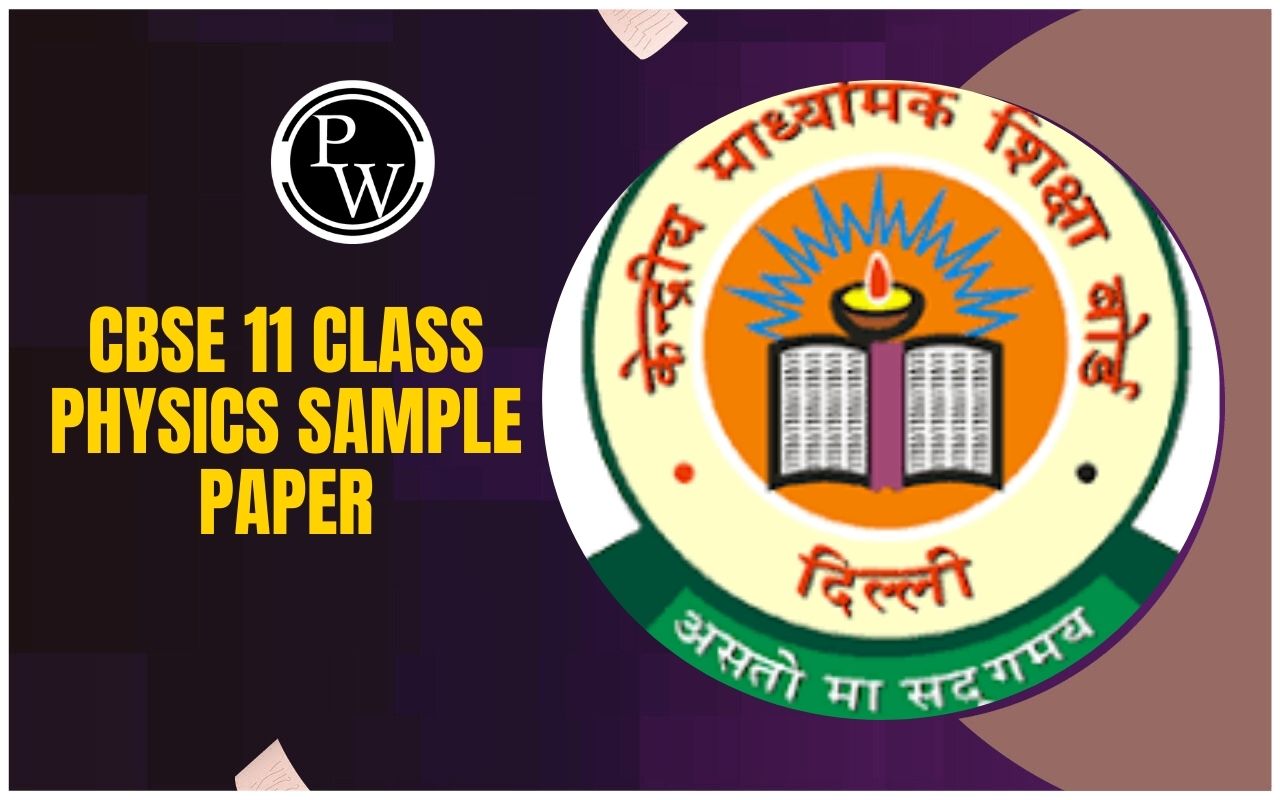
Important Questions for Class 11 Physics Chapter 2: Chapter 2 of Class 11 Physics, "Motion in a Straight Line," covers the basic principles of motion along a straight path. It includes concepts like displacement, velocity, speed, and acceleration and their mathematical representations.
Key equations of motion for uniformly accelerated and non-uniform motion are discussed, along with graphical representations of velocity-time and displacement-time graphs. Important topics like the difference between average and instantaneous quantities, and uniformly accelerated motion, are explored. The chapter emphasizes problem-solving techniques and applications, laying the foundation for understanding more complex motion scenarios in subsequent chapters.Important Questions for Class 11 Physics Chapter 2 Overview
Class 11 Physics Chapter 2, Motion in a Straight Line, is a fundamental topic that lays the foundation for understanding basic kinematics. Key concepts such as displacement, velocity, acceleration, and the equations of motion are introduced, which are crucial for solving real-world physics problems. Important questions in this chapter test students' ability to apply these concepts in different scenarios, such as uniformly accelerated motion, free fall, and relative motion. Mastering this chapter is essential for higher-level physics studies and competitive exams, where these concepts are frequently tested. Understanding these principles is key for problem-solving in both theoretical and practical contexts.Important Questions for Class 11 Physics Chapter 2 PDF
Important Questions for Class 11 Physics Chapter 2 Motion in a Straight Line is crucial for building a strong understanding of the topic. These questions cover various concepts, including displacement, velocity, acceleration, and their graphical representations. Practicing these questions will help you grasp the key principles and enhance problem-solving skills. Below is the PDF with detailed solutions to help you prepare effectively.Important Questions for Class 11 Physics Chapter 2 PDF
Important Questions for Class 11 Physics Chapter 2 with Solutions
Below is the Important Questions for Class 11 Physics Chapter 2 Motion in a Straight Line -1. Under what condition is the relation s=vt correct?
Ans: The relation s=vt is valid when the particle moves with uniform velocity and along a straight line.
2. Two balls of different masses are thrown vertically upward with the same initial speed. Which one will rise to a greater height?
Ans: When two balls of different masses are thrown vertically upward with the same initial speed, both of them will rise to a greater height.

4. A 400m long railway train, 400m long is going from New Delhi railway station to Kanpur. Can we consider a railway train as a point object?
Ans: Yes, we consider a railway train as a point object. This is because the length of the train is smaller as compared to the distance between New Delhi and Kanpur.

6. Can the speed of an object be negative? Justify.
Ans: The speed of an object can never be negative. This is because the distance is also always positive.
7. Under what condition the displacement and the distance of a moving object will have the same magnitude?
Ans: Distance and displacement have the same magnitude when the object will move in a straight line.
8. What is the shape of the displacement time graph for uniform linear motion?
Ans: The shape of the displacement time graph for uniform linear motion is a straight line inclined to the time axis (x-axis).
9. In which of the following examples of motion, can the body be considered approximately a point object:
a) A railway carriage moving without jerks between two stations.
Ans: As the size of a carriage is very small as compared to the distance between two stations, the carriage can be treated as a point-sized object.
b) A monkey sitting on top of a man cycling smoothly on a circular track.
Ans: As the size of a monkey is very small as compared to the size of a circular track, the monkey can be considered as a point-sized object on the track.
c) A spinning cricket ball that turns sharply on hitting the ground.
Ans: As the size of a spinning cricket ball is comparable to the distance through which it turns sharply on hitting the ground, the cricket ball cannot be considered as a point object.
d) A tumbling beaker that has slipped off the edge of a table.
Ans: As the size of a beaker is comparable to the height of the table from which it slipped, the beaker cannot be considered as a point object.
10. Sameer went on his bike from Delhi to Gurgaon at a speed of 60km/hr and came back at a speed of 40km/hr. What is his average speed for the entire journey?

11. A particle is thrown upwards. It attains a height (h) after 5 seconds and again after 9s comes back. What is the speed of the particle at a height h?

12. Figure gives the x-t plot of a particle in one-dimensional motion. Three different equal intervals of time are shown. In which interval is the average speed greatest, and in which is it the least? Give the sign of average velocity for each interval.
Ans: The average speed is greatest in interval 3 and least in interval 2. It is positive in intervals 1 & 2 and negative in interval 3.
The average speed of a particle shown in the x-t graph is given by the slope of the graph in a particular interval of time.
From the graph, it is clear that the slope is maximum and minimum restively in intervals 3 and 2 respectively. Thus, the average speed of the particle is the greatest in interval 3 and is the least in interval 2. The sign of average velocity is positive in both intervals 1 and 2 as the slope is positive in these intervals. However, it is negative in interval 3 because the slope is negative in this interval.
13. Define the term relative velocity.
Ans: The relative velocity of any object A with respect to object B is termed as the time rate of change of position of A with respect to B.

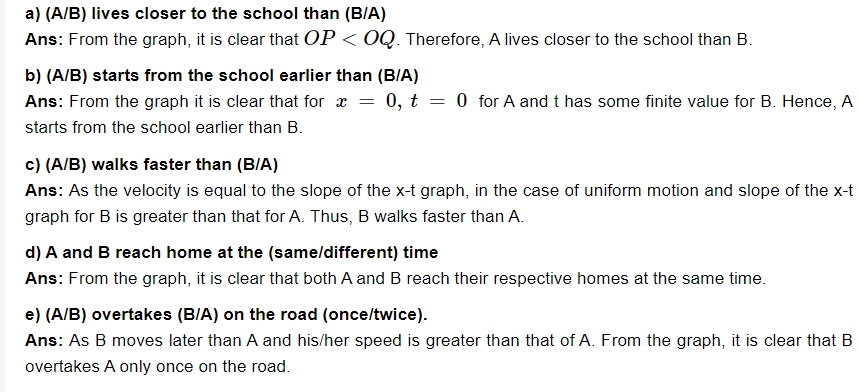
4 Marks Questions
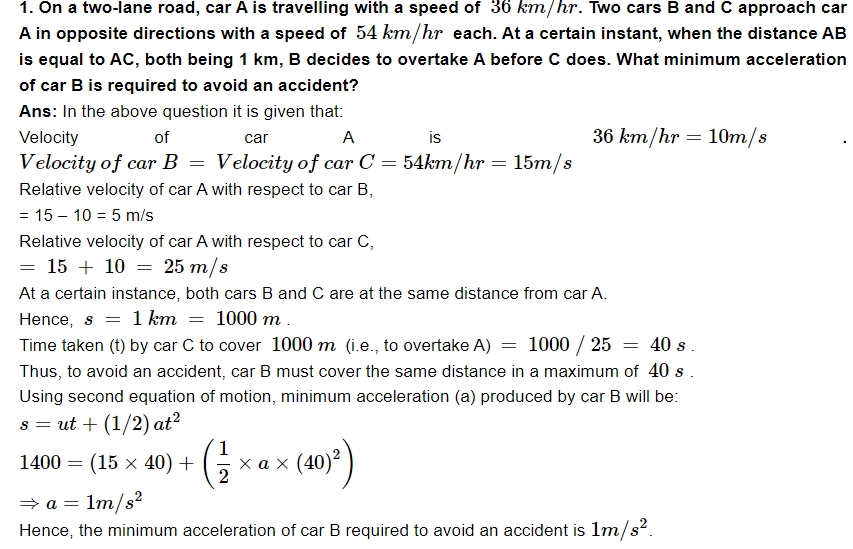
2. Explain clearly, with examples, the distinction between:
a) The magnitude of displacement (sometimes called distance) over an interval of time, and the total length of path covered by a particle over the same interval;
Ans: The shortest distance (which is a straight line) between the initial and final positions of the particle gives the magnitude of displacement over an interval of time. The total path length of a particle is the actual path length covered by the particle in a given interval of time. For example, suppose a particle moves from point A to point B and then comes back to a point, C taking a total time t, as shown below. Then, the magnitude of displacement of the particle is AC.
Whereas, total path length = AB + BC
We know that the magnitude of displacement can never be greater than the total path length. But, in some cases, both quantities are equal to each other.
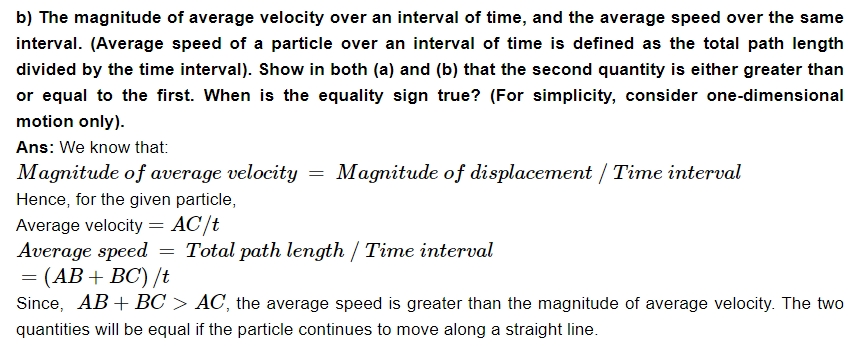

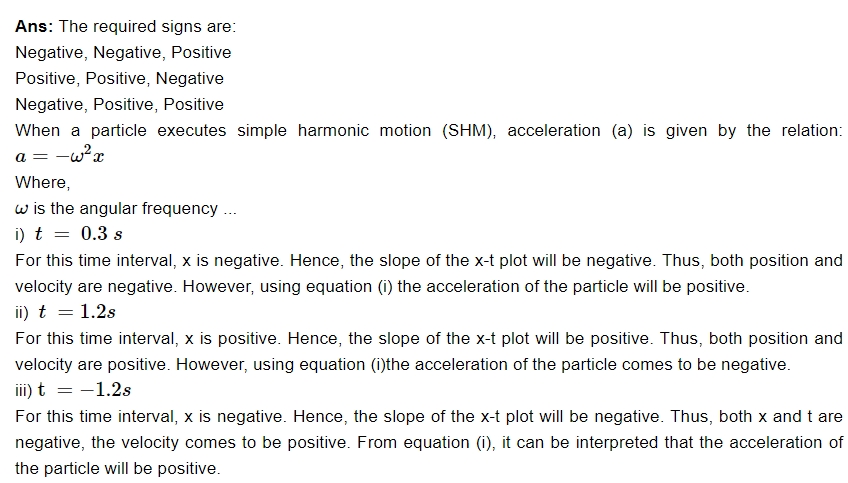
Benefits of Solving Important Questions for Class 11 Physics Chapter 2
Solving important questions for Class 11 Physics Chapter 2 (Motion in a Straight Line) offers several benefits that enhance understanding and performance in exams. Here are some of the key advantages:Conceptual Clarity : By solving different types of questions, you get a better grasp of core concepts like displacement, velocity, acceleration, and their interrelations. This deepens your understanding of motion in a straight line.
Improved Problem-Solving Skills : Working through a variety of problems enhances your ability to approach and solve complex problems quickly and accurately, which is crucial during exams.
Time Management : Regular practice helps in refining time management skills, enabling you to solve problems efficiently within the given exam time.
Familiarity with Question Patterns : Repeatedly solving important and previous year questions helps you familiarize yourself with common question patterns and the types of problems likely to appear in exams.
Strengthened Calculation Skills : Physics involves numerous calculations. Solving important questions improves your speed and accuracy in performing these calculations, reducing the chances of making errors during exams.
Better Exam Performance : Practicing with a variety of questions allows you to identify your weak areas and focus on them, ultimately leading to better performance in tests and exams.
Boosted Confidence : The more you practice, the more confident you become in solving problems and applying concepts, which can reduce anxiety during exams.
Important Questions for Class 11 Physics Chapter 2 FAQs
What type of motion is a straight line?
What if motion is in a straight line?
What are some facts about motion in a straight line?
What is showing motion on a straight line called?



